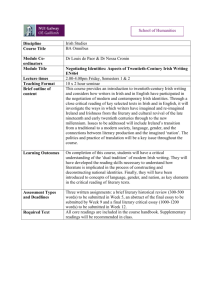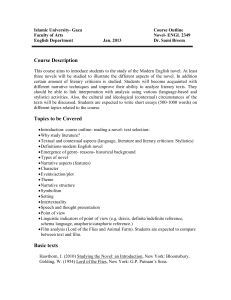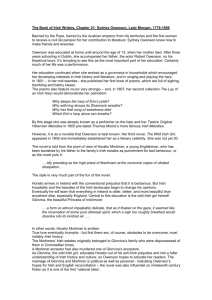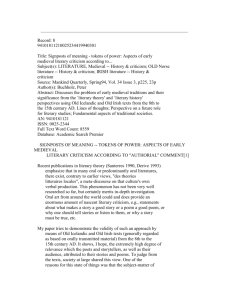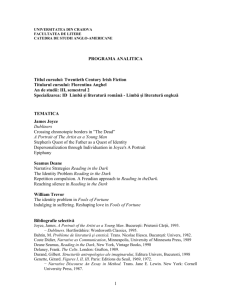Big House Irish and British Literature_Paul Delaney & Eve Patten
advertisement
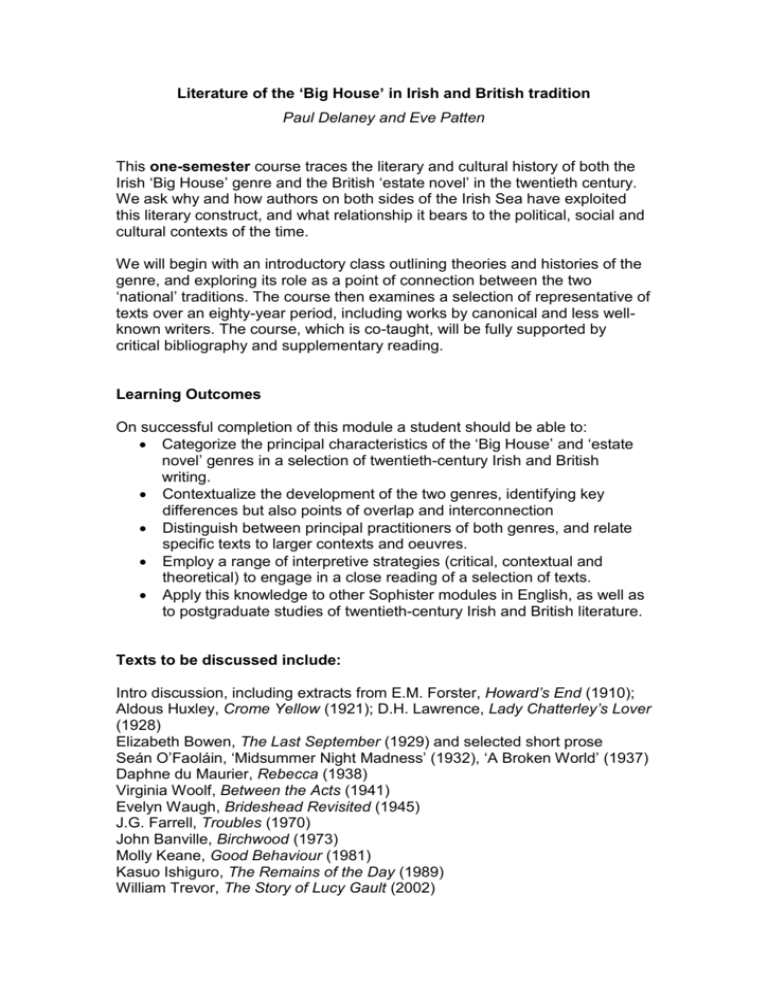
Literature of the ‘Big House’ in Irish and British tradition Paul Delaney and Eve Patten This one-semester course traces the literary and cultural history of both the Irish ‘Big House’ genre and the British ‘estate novel’ in the twentieth century. We ask why and how authors on both sides of the Irish Sea have exploited this literary construct, and what relationship it bears to the political, social and cultural contexts of the time. We will begin with an introductory class outlining theories and histories of the genre, and exploring its role as a point of connection between the two ‘national’ traditions. The course then examines a selection of representative of texts over an eighty-year period, including works by canonical and less wellknown writers. The course, which is co-taught, will be fully supported by critical bibliography and supplementary reading. Learning Outcomes On successful completion of this module a student should be able to: Categorize the principal characteristics of the ‘Big House’ and ‘estate novel’ genres in a selection of twentieth-century Irish and British writing. Contextualize the development of the two genres, identifying key differences but also points of overlap and interconnection Distinguish between principal practitioners of both genres, and relate specific texts to larger contexts and oeuvres. Employ a range of interpretive strategies (critical, contextual and theoretical) to engage in a close reading of a selection of texts. Apply this knowledge to other Sophister modules in English, as well as to postgraduate studies of twentieth-century Irish and British literature. Texts to be discussed include: Intro discussion, including extracts from E.M. Forster, Howard’s End (1910); Aldous Huxley, Crome Yellow (1921); D.H. Lawrence, Lady Chatterley’s Lover (1928) Elizabeth Bowen, The Last September (1929) and selected short prose Seán O’Faoláin, ‘Midsummer Night Madness’ (1932), ‘A Broken World’ (1937) Daphne du Maurier, Rebecca (1938) Virginia Woolf, Between the Acts (1941) Evelyn Waugh, Brideshead Revisited (1945) J.G. Farrell, Troubles (1970) John Banville, Birchwood (1973) Molly Keane, Good Behaviour (1981) Kasuo Ishiguro, The Remains of the Day (1989) William Trevor, The Story of Lucy Gault (2002) Selected criticism Deane, Seamus, ‘The Literary Myths of the Revival’, in Celtic Revivals: Essays in Modern Irish Literature (1985) Genet, Jacqueline, ed. The Big House in Ireland: Reality and Representation (1991) Hand, Derek, A History of the Irish Novel (2011) Kreilkamp, Vera, The Anglo-Irish Novel and the Big House (1998) Rauchbauer, Otto, ed. Ancestral Voices: The Big House in Irish Literature (1992) Connor, Stephen, The English Novel in History 1950-1995 (1996) Gill, Richard, Happy Rural Seat: The English Country House and the Literary Imagination (1972) Head, Dominic, Modern British Fiction (2000) Higdon, David, Shadows of the Past in Contemporary British Fiction (1984) Kenny, Virginia, The Country House Ethos in English Literature 1688-1750 (1984) Mackay, Marina, Modernism and World War II (2007) Taylor, D.J. After the War: The Novel and England since 1945 (1994) Specific bibliography will be provided with each class; supplementary articles will be posted on Blackboard.
